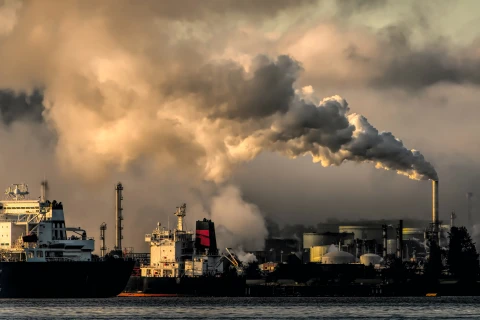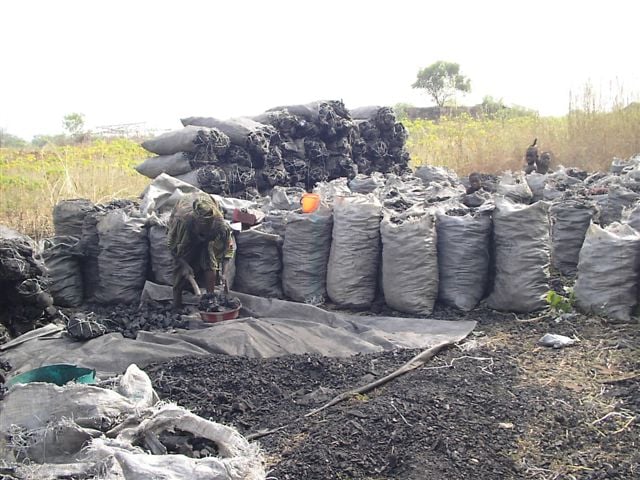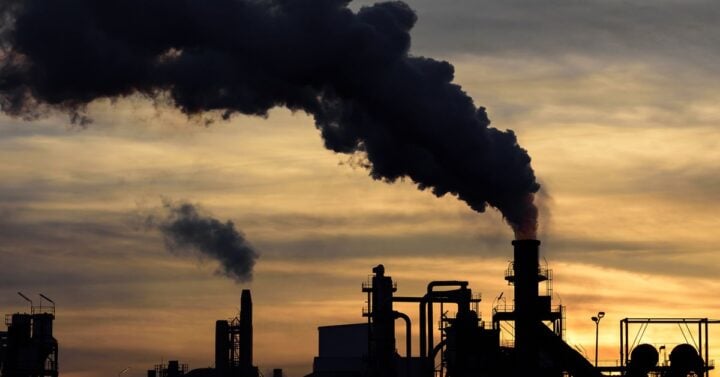Gbenga Adeku is a painter, sculptor, and upcycle artist. After graduating from Obafemi Awolowo University with a degree in fine and applied arts, Adeku felt a sense of guilt about the amount of waste going to landfills and decided to start creating art specifically from plastic bottles.
By transforming PET bottles and beverage cans into art pieces, he is not only creating visually stunning works but also spreading important messages about sustainability. In a collaboration with Nike’s flagship store in Nigeria, Adeku’s unique art featuring ants and fish is reaching even more people through merchandise.
In this interview with TheCable’s DEBORAH BODUNDE, Adeku shares his journey as an upcycle artist and the inspiration behind his creative process.
TheCable: Tell us about your background and journey as an upcycle artist
Advertisement
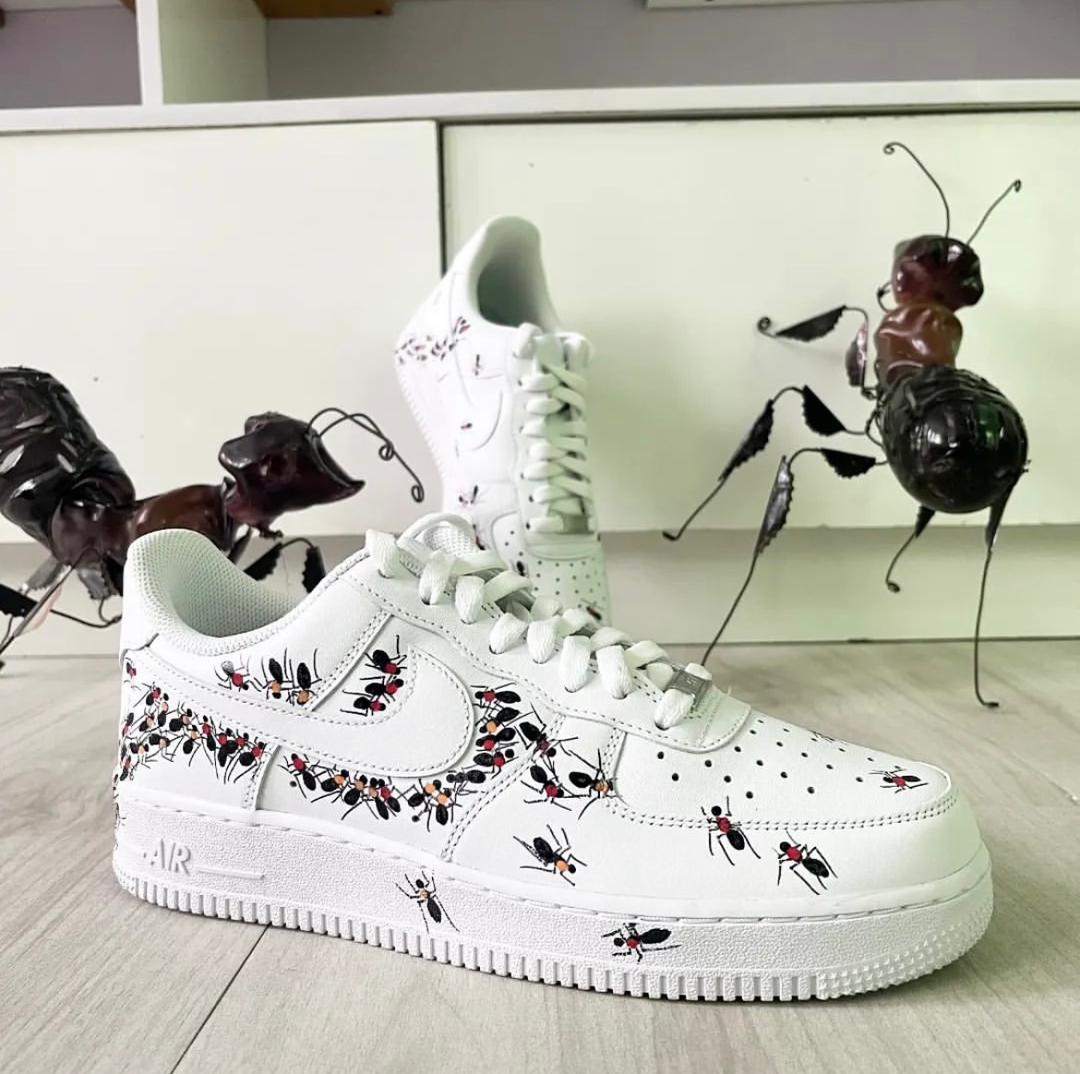
Adeku: I grew up in an artistic family. My dad has been an artist since I’ve known him, and a lot of my adolescence was spent in a studio with him. I was his apprentice. I studied fine and applied arts at Obafemi Awolowo University, and after that, I moved into freelancing as an illustrator from 2015 to 2018 before I decided to focus on upcycling.
There was a time when I realised that there was a lot of solid waste around, but I didn’t know exactly what to do, so I started to gather information on creative arts. In 2019, I decided to go into studio practice, and I have been a full-time artist since then.
TheCable: Besides learning from your dad, who is also an artist, what inspired your interest in recycling plastic materials and turning them into art?
Advertisement
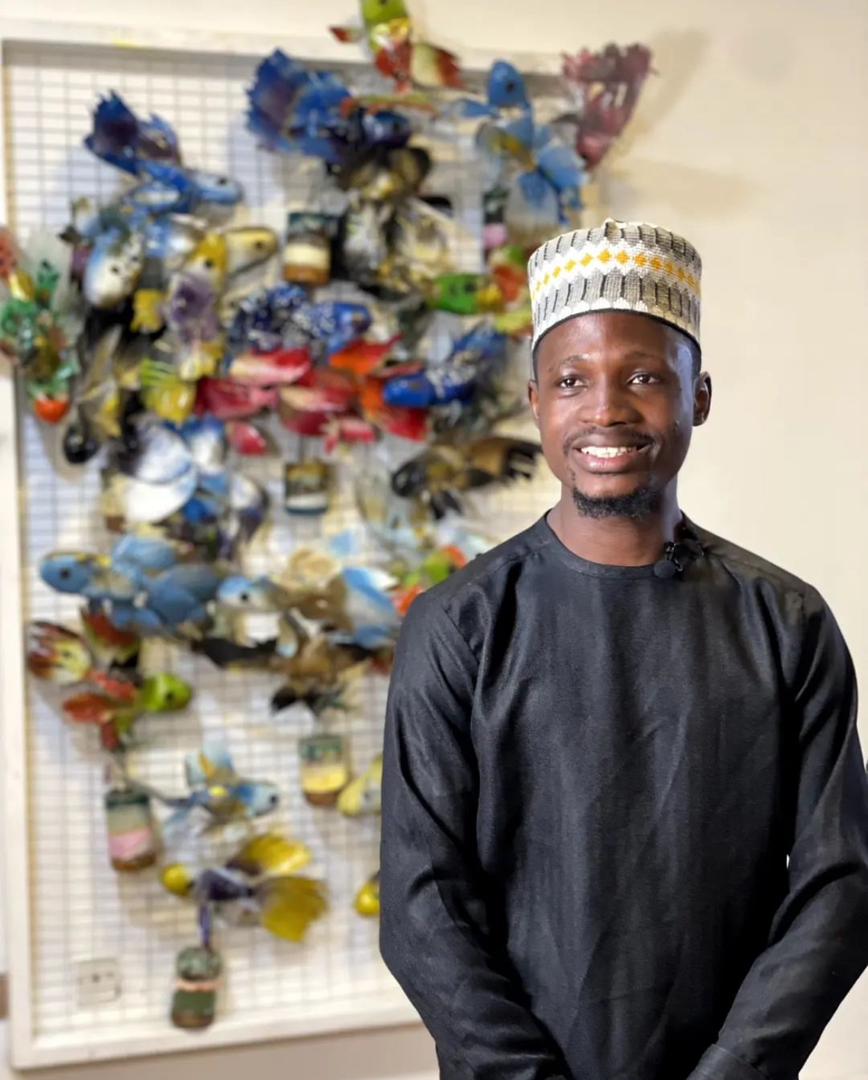
Adeku: What happened was that I found an article online about microplastics and how plastic waste doesn’t just disappear; even after they have been broken down, they still find a way to hurt us and our environment. The article said a PET bottle would last for 300 years before it even started to break down. It was sad to read that, and I thought this was a material that I could work with, so I did more experimentation with plastics and figured out how to sculpt them.
It was the first material I felt most in love with, and it resonated with my work process. The article that I read converted me; it was such an awakening for me, and I literally saw how I was part of the evil that is plastic pollution. Maybe all I’m doing right now is trying to make some sort of restitution.
TheCable: You use ants and fish as major subjects of your artwork; what is the significance attached to this?
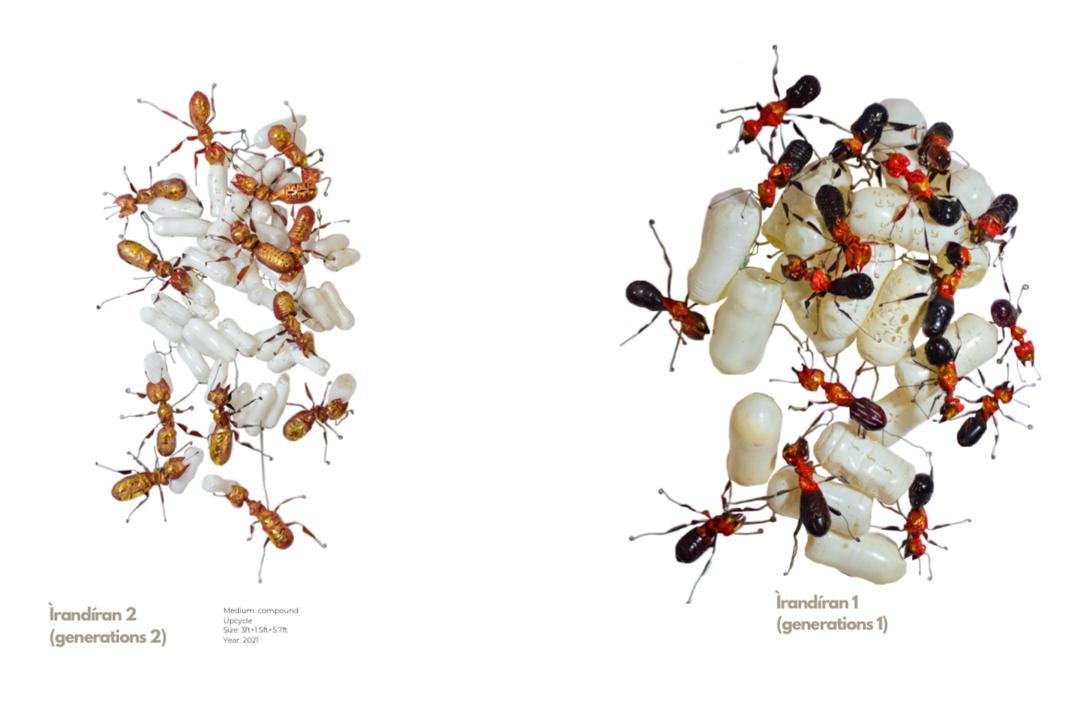
Adeku: Ants are one of the most resilient creatures among the insects. They have an economy of waste, and they feed on dead things. They store food for different seasons, and they are thriving. You won’t see a poor ant, and if you block an ant walking towards something, it will figure out a way to still get to what it wants. They also have a community. They have ranks—the queen, the workers, and the soldiers—and they all perform their duties for the sustainability of their ecosystem.
Advertisement
So, I thought of turning plastic into artwork to represent what we need right now, which is understanding the idea of sustainability and building a circular world. I decided to use ants to represent life on land and the kind of people who understand how to make the world a sustainable place.
I also have a fascination for aquatic life. Growing up, my dad had a lot of national geographic magazines with a lot of pictures. So, I’ve had that inclination to like the ocean, and then I found out that so many species that live in water are being affected by plastics. From PET bottles, I create fish and turtles, and every time we get to make a new marine life creature by experimenting with those plastics.
TheCable: How do you hope your art will inspire others to reduce their plastic consumption and recycle more?
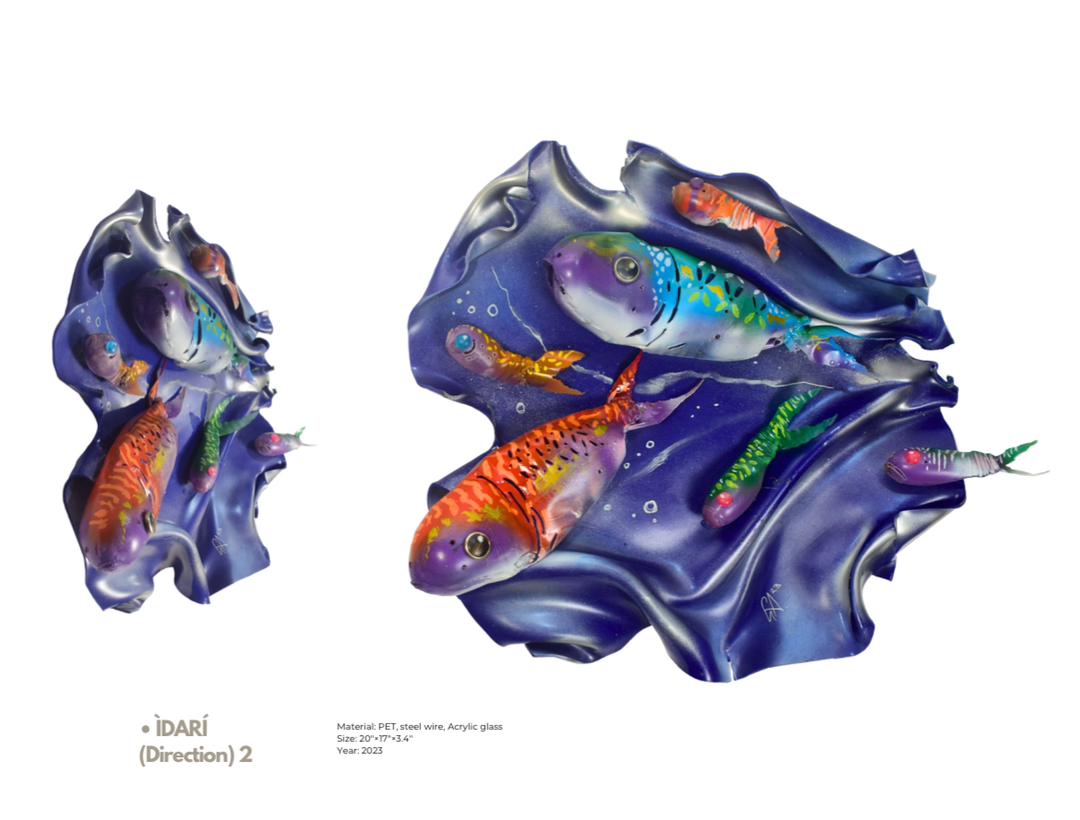
Adeku: I think the first thing would be the educational part of the art. If they think the artwork is beautiful, I want them to know that the place where it’s not beautiful is in the environment, and that is my way of telling people to find an alternative use for their plastic waste. I also hope that when people see my work, it inspires them, and they come up with ideas.
Advertisement
For instance, there was a little boy who attended my workshop and saw the pieces, and he wanted to use PET bottles for robotics. In his mind, he was thinking about how he could turn those plastics into something that could form the shell of a robot. So, other people can look at that same material differently and make something out of their ideas. More than the symbolism of plastic and what it stands for, through my artwork, I’m trying to get people personally connected to the beauty of nature enough to be able to say no to plastic.
TheCable: The Lagos government recently announced a ban on single-use plastics and styrofoam. What are your thoughts? Do you think this can be fully implemented in a commercial city like Lagos?
Advertisement
Adeku: This is a policy that I really applaud, but I also don’t know how effective it can be. Plastic is now ingrained in our society, and it will be hard to just tell people to cut it off. The government banning plastic never really stops it until individuals make a conscious decision to do things differently. The government trying to convince corporations is a daunting task, but we have seen a few of them make better decisions over time.
I think the bigger power is in the hands of the people versus the corporations. Imagine if these corporations produce PET bottles and no one is buying them and there is a massive decline in their sales. What do you think the companies will do? Corporations will realise that the people are hurting by doing that, and it’s bad for the environment. The people don’t want it anymore, and eventually, they will do what the people want.
Advertisement
Lagos is a powerful place, and that was where the #EndSars protest started. Imagine if we had a match against plastic bottles that was totally non-violent and a lot of people engaged. It has happened in other parts of the world, like Indonesia. It might take a while, but I don’t think the power is just in the hands of the government.
TheCable: Will this new policy affect your work in any way? If people no longer produce and use plastic, how would you get materials for your artwork?
Advertisement

Adeku: I think it would be a good thing for me. Art is the pinnacle of material exploration. Michelangelo took stones and carved out marble. So, I will always find another material to control to tell my stories if plastics no longer exist. I chose plastic so that I could express myself through it. I majored in painting; and minored in graphic arts; and by apprenticeship, I was a sculptor and still am.
I use plastic because that is what is available to me now and that I can use to convey my message. I would ultimately prefer a world where there are no PET bottles because, right now, I have too many plastics to work with.
TheCable: What do you think the government can do to curb plastic pollution?
Adeku: I think, first of all, there has to be more demand for recycling. This means that we need more companies that are actively using recycled PET bottles. The government should give incentives to environmental industries, circular economy-based industries, and industries that can make long-term use of these recycled plastics.
For example, companies that produce plastic chairs from recycled plastic need to be established. Another thing that people will need is more pickup centres for these recyclable plastics. It is achievable, but it will require a lot of effort from the government and the people.
TheCable: How have your exhibitions helped spread your message and create climate awareness?

Adeku: Our first exhibition was in 2022, and we spent three years preparing for it. In the first exhibition we did, most people who came first did not know that the artworks were created from PET bottles; they thought it was metal. The creators now had to explain to them how the pieces were created from plastic bottles and, at the same time, educate them on how plastic pollution is affecting our environment and the marine ecosystem. A lot of people who attended the event were closely educated about plastic pollution. Some people collected the works for the same reason, and others took the ideas behind the art and used them in productive ways.
We also have a community of people who are poets and artists, and everyone is consistently learning about plastics and creating narratives that matter. We are also trying to get people to experience the ocean floor and to experience life on land as minuscule as ants would experience it. Experiences change people, and the exhibitions have really helped us to do that.
For the next exhibition we are working on, we want to collaborate with NGOs that do cleanups so that we can have more people take action by joining those NGOs and participating in their weekly cleanups. But we are generating so much plastic waste every single day that, as much as we are cleaning up, millions of people are depositing so much more out of ignorance and nonchalance.
TheCable: Tell us about your collaboration with Nike and the impacts that you have been able to make through that.
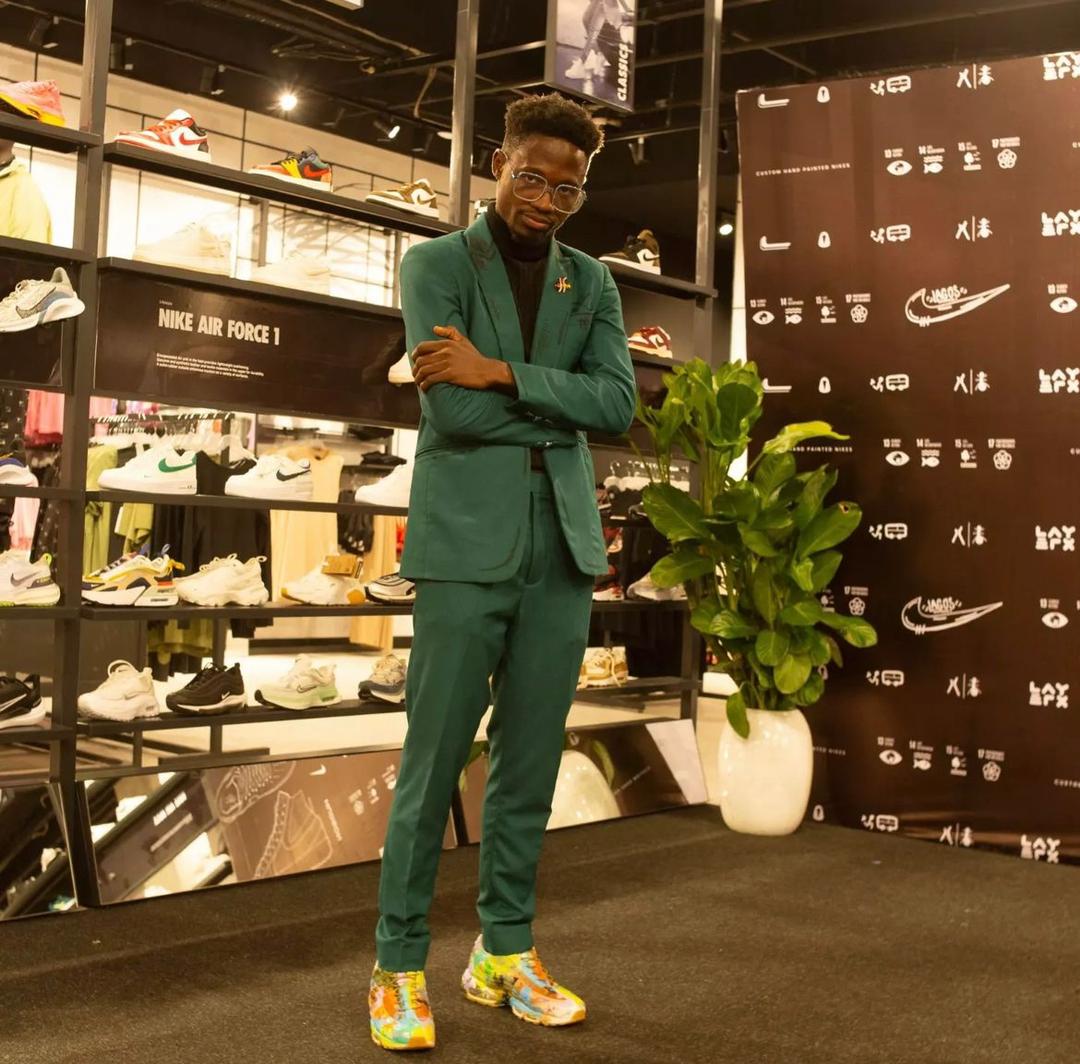
Adeku: That was one of the opportunities that came from our exhibition. We had one of Nike’s executives at our exhibition, and Nike has been big on becoming a circular company for some years now. So, they have shoes that they produce from waste and stuff like that. When they saw my work, what resonated the most with them was the idea of ants and how ants are similar to what their brand represents—teamwork and innovation—so they wanted to express that and also identify with the Nigerian culture.
It has been very helpful in spreading our message because, in places where traditional artwork on the wall will not go, having ants on sneakers is street fashion, and it will get people to ask questions and present an opportunity to explain what it represents. It is almost as though everyone who is wearing the sneakers is a preacher of sustainability. It has been good, and we look forward to that level of collaboration on a global scale.
TheCable: What are some of the challenges you face as an upcycle artist?
Adeku: Because the concept of our work is new, sometimes, when we reach out to galleries, they don’t exactly seem to be interested in what we are doing, even though they have the right positioning for partnership. That has been a challenge over the years.
Another challenge is material exploration. Plastic art is very new, and we are really trying to control what has already been shaped. There is so much work that goes into creative research before we arrive at the finished products. We also need more collaborations and sponsorships because we are trying to get the exhibitions to be as community-based as possible.
Add a comment

